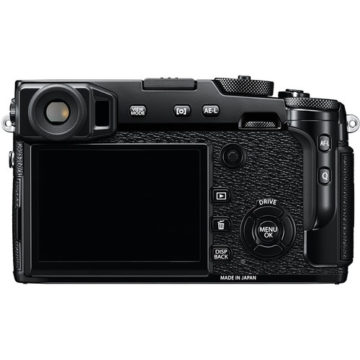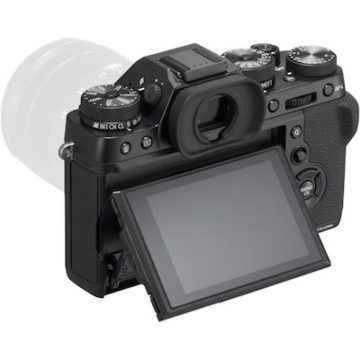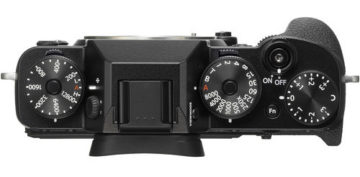
It’s been a long time coming but Fujifilm’s two flagship cameras finally have a successor each: the X-Pro1, the camera that started it all nearly five years ago, has been replaced by the X-Pro2, and Fujifilm’s best-selling mirrorless model to date, the X-T1, must now give way to its more powerful sibling, the X-T2.
Although the two cameras have much in common, including the latest 24MP X-Trans III APS-C sensor, X-Processor Pro image processor, advanced hybrid autofocus system, various film simulation modes, maximum ISO sensitivity of 51200 and weather resistance to name a few, there are a number of characteristics that set them apart. Let’s have a look at them now!
Ethics statement: The following is based upon official specifications and our personal experience with Fujifilm cameras. We were not asked to write anything about these cameras, nor were we provided with any sort of compensation. Within the article, there are affiliate links. If you decided to buy something after clicking the link, we will receive a small commission. To know more about our ethics, you can visit our full disclosure page. Thank you!
1. SLR vs. rangefinder design
First, let’s get the obvious differences out of the way, the first being the design.
The X-T2, like the X-T1, has a designed inspired by analog SLRs of the past. The electronic viewfinder is located at the centre of the body inside a fake pentaprism, and it comes with a substantial grip that makes the body comfortable to use even with large telephoto lenses.
By contrast, the X-Pro2’s design is much closer to that of a rangefinder camera. The hybrid viewfinder is located on the left-hand side of the body and the grip is noticeably smaller.
The X-T2 is the heavier and taller of the two models, but the X-Pro2 is visibly longer.
Both feature a number of external dials for shutter speed, ISO, exposure compensation, drive modes, and metering. There are a total of six function buttons on the X-T2 as opposed to the five function buttons on the X-Pro2.
2. Fixed screen vs. tilting screen
The second physical difference concerns the 3-inch rear monitor. While the X-Pro2 screen is fixed to the rear of the camera, the X-T2’s can tilt up 90 degrees, down 45 degrees, and 45 degrees to the side for portraits. This feature makes the X-T2 very useful for shooting at awkward angles.
The X-Pro2’s screen has a resolution of 1.62 million dots, while the X-T2’s is slightly inferior at 1.04 million dots.
3. Advanced hybrid multi viewfinder
One of the X-Pro2’s star features is its advanced hybrid multi viewfinder. It is called “hybrid” because you can switch between an electronic and optical viewfinder using a toggle on the front of the camera. No other mirrorless camera, besides the previous X-Pro1 and the X100 series, has this unique feature.

The optical viewfinder (OVF) is a Reverse Galilean type with a field coverage of 92% and an equivalent field of view of 24mm in 35mm terms. This means that with shorter focal lengths, such as the XF 14mm f/2.8, you won’t see the entire frame. Within the OVF you’ll also notice a bright frame that shows you the actual field of view. It is useful because it lets you see elements before they enter your frame and pre-visualise the shot.
The electronic viewfinder (EVF) has a resolution of 2.36 million dots, which is the same resolution as the EVF of the X-T2. However, it is smaller (0.48 vs 0.5 inches) and has a lower magnification (0.59x vs 0.77x). Interestingly, the X-Pro2’s EVF has a better frame rate (85fps) than that of the X-T2 (60fps) but if you use the vertical battery grip with the X-T2, it goes up to 100fps.
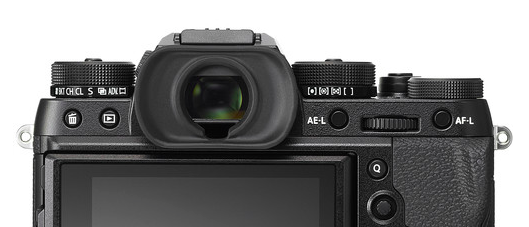
The X-T2 also benefits from an OLED screen while the X-Pro2 has a TFT screen.
4. 4K video capabilities
Up until recently, Fujifilm was strictly known as a still photography company that showed little interest in improving the video features of its mirrorless cameras. This is no longer the case now that the X-T2 has come along: it is the first in Fujifilm’s line-up to record 4K video at 24, 25 and 30fps and Full HD up to 60fps with a 100Mbps data rate.
Not only do you have full manual control over your exposure settings but you can also use the shutter button to start and stop recording. It comes with its own dedicated movie mode on the drive dial, giving you immediate access to all the most important video settings.
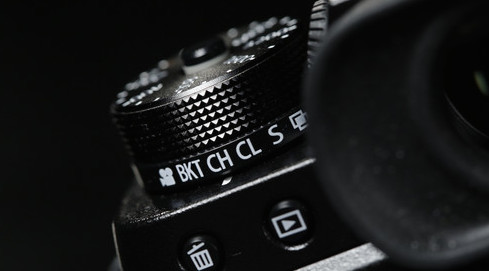
You can use the camera’s Film Simulation Modes (colour profiles) to give your footage a specific look in-camera, and if you use an external recorder via the HDMI port (4:2:2 8bit), you also gain access to the new flat F-Log Gamma profile for grading in post-production. Recording is limited to 10 minutes in 4K and 15 minutes in Full HD but you can extend this to 30 minutes with the vertical battery grip. When filming in 4K, the camera performs a 1.17x crop, reducing the field of view.
Below you can find our 4K video compilation taken with the X-T2:
The X-Pro2 is capable of recording video with manual control over exposure and access to the various Film Simulation Modes but it is limited to Full HD up to 60fps. The only way to start or stop recording is to set it to a function button. The quality is better than the previous 16MP cameras from Fujifilm but won’t satisfy the most discerning video crowd.
5. AF-C Custom Settings
Both the X-T2 and X-Pro2 come with the latest version of Fujifilm’s hybrid autofocus system, which means that both contrast and phase detection autofocus points are baked onto the sensor (325 AF points across the frame with 91 phase detection points). They are the only Fujifilm cameras to feature an AF toggle on the rear to change the AF point.
The X-T2 has a little more to offer and comes with a new AF-C Custom Settings mode that allows you to vary the speed and reactivity of the autofocus, as well as the zone of the frame to which it should give priority depending on your subject’s movements and speed. These features make the X-T2 a serious choice for action photography.

Photographer: Steve Christo
Thanks to firmware 2.0, the X-Pro2 AF system has been upgraded to the same level as the X-T2 as far as the AF points and algorithm are concerned. However it didn’t receive the AF-C Custom Settings mode, which is likely a strategy to differentiate the two models and their intended usage.

6. Vertical power booster grip
The vertical battery grip, or Vertical Power Booster Grip as Fujifilm calls it, is a new accessory for the X-T2. It houses two extra batteries that work in tandem with the battery inside the camera. Although it is optional, Fujifilm is definitely pushing it as a must-have component to get the most out of the camera’s advanced capabilities.
The role of the new grip, in addition to giving the X-T2 extra battery power and improving the grip, is to enhance the performance of the camera. By switching it from Normal to Boost mode, it raises the maximum continuous shooting speed from 8fps to 11fps (or 14fps with the electronic shutter), increases the 4K shooting time from 10 to 30 minutes, reduces shutter release time lag and blackout time, while also giving you access to a second shutter release button, Q menu, AF toggle, exposure dial and AF-L/AE-L buttons.
The X-Pro2 does not have any contacts on the bottom plate and thus zero compatibility with a vertical battery grip, even if Fujifilm wanted to make one. The body alone gives you an 8fps continuous burst with both the mechanical and electronic shutter and an EVF refresh rate of 85fps, which is slightly slower than the 100fps of the X-T2 EVF (in Boost mode).
7. ISO and shutter dials
Both cameras are very well-endowed when it comes to external dials. However, you’ll notice that, on the X-Pro2, the ISO and shutter dials have been merged into one single dial. To change the shutter speed, you simply turn the dial; to change the ISO, you must first lift the dial and then turn it.
Personally speaking, we don’t find this dial very user-friendly. More than once, we accidentally changed the shutter speed value whilst trying to adjust the ISO.
On the X-T2, ISO and shutter speed are located on two separate dials with a lock/unlock button at the centre. We find this solution more comfortable if you often change both values.
8. UHD-II compatibility of Dual SD card slots
This is a small difference but it’s worth mentioning. Both the X-T2 and X-Pro2 have dual SD card slots with the difference that on the X-Pro2, only one slot is compatible with UHD-II memory cards. On the X-T2, by contrast, both slots are compatible, so you can easily record 4K or shoot at high burst speeds regardless of the slot you choose.
9. Electronic shutter
Both cameras come with an electronic shutter option that allows you to shoot in complete silence. However, the X-Pro2 has a more limited range of 1 sec. to 1/32000 sec. while the X-T2’s range has been extended to 30 sec. to 1/32000 sec.
10. Price
While there is a difference in price, it isn’t as big as you might think. The X-Pro2 is the slightly more expensive of the two, priced at $1699 for the body alone versus $1599 for the X-T2 body. It is also possible to purchase the X-T2 with the 18-55mm kit lens but that will set you back an extra $300.
Conclusion
It isn’t difficult to guess which markets these two cameras target. Quoting from the official press release:
“The two models deliver unparalleled performance in their distinctive fields, with the X-T2 excelling in portraiture, nature and sports photography, and the X-Pro2 ideal for snapshots and discreet documentary photography.”
Still, there is nothing stopping you from using the X-T2 for, say, documentary photography or the X-Pro2 for sports if the mood strikes. Give or take a few differences such as the inclusion of 4K on the X-T2 and the hybrid viewfinder on the X-Pro2, the two models are actually very similar in all areas including image quality, autofocus performance and overall usability, and only you can decide which best suits your style of shooting.
Check price of X-T2 at B&H Photo | Check price of X-Pro2 at B&H Photo
To find out more about these two cameras, be sure to check out the following reviews:
- Fujifilm X-Pro2 Review by Kevin Mullins
- Fujifilm X-Pro2 Review by MirrorLessons
- Fujifilm X-T2 Review by Dan Bailey
- Fujifilm X-T2 Review by Olaf Sztaba


